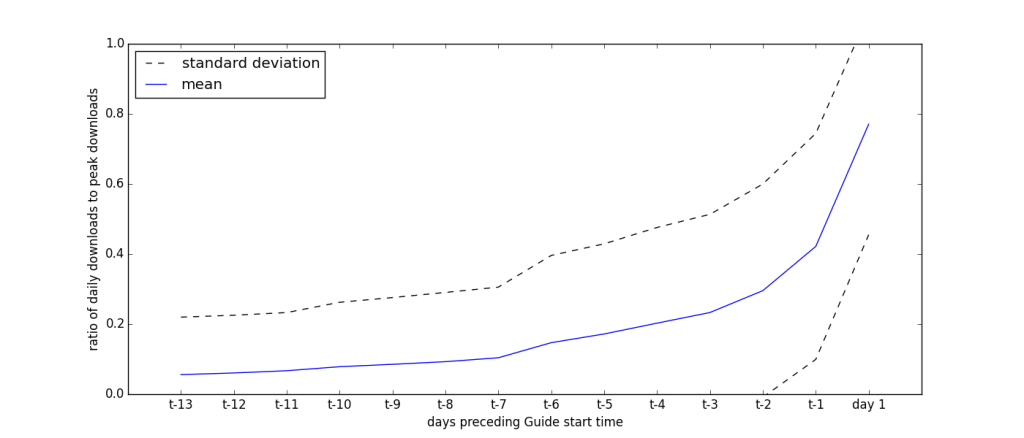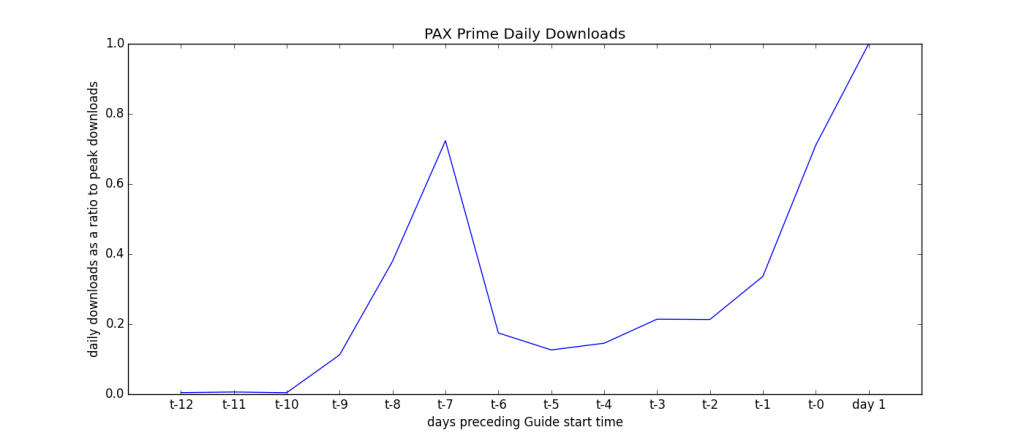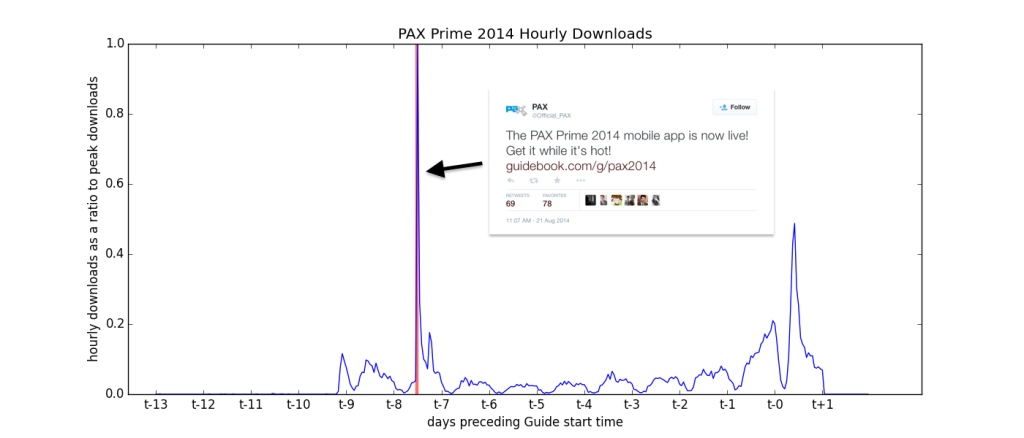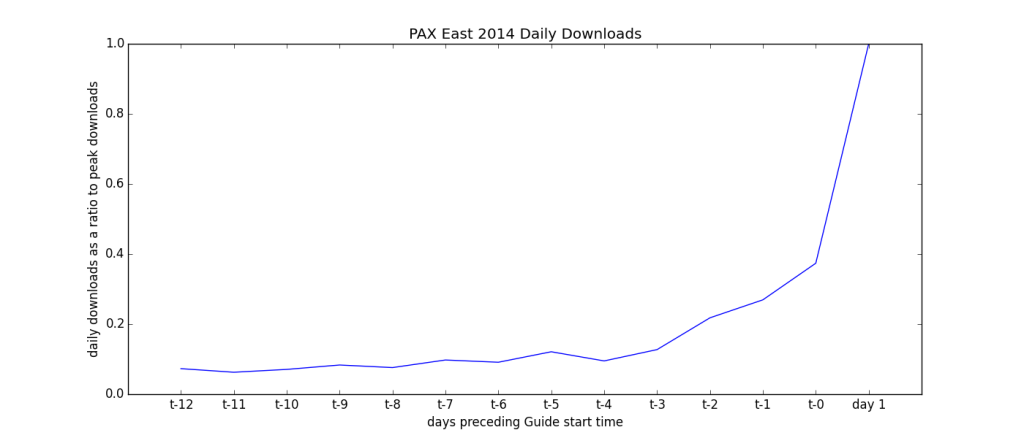Ask A Data Scientist: When Will People Download My Guide (And Why?)
Patrick McNally is Guidebook’s Director of R&D. He earned his doctorate in computer science at Northwestern University weathering the arctic conditions of Chicago. He likes clearly labeled axes and lunch conversations about gradient descent algorithms.
Expected Guide Download Behavior and You
Today I want to share some data on the download behavior we see from users across the Guidebook platform. First I’m going to talk about the normal behavior we usually see—what most events can expect from their attendees—then I’m going to point out some anomalous events and break down what happened to achieve the different behavior.
Usually a guide’s biggest day for downloads is the first day of the event. The next biggest day tends to be the day before the first day, and so on. Intuitively, we might say downloads tend to ramp up as the event becomes more immediate to attendees. Regardless of why this behavior occurs, we can see that it is does so by looking at the average download curve of many events on the Guidebook platform. Here is such a curve for over a thousand recent events:

This graph requires a bit of explanation. For one thing, the y-axis goes from 0.0 to 1.0 rather than some range of download numbers. This is because it isn’t obvious how to compare a guide with 500 downloads to a guide with 50,000 downloads. This composite is built by normalizing each download curve by its respective peak. In this way, we can easily compare the download curves of Guides with very different overall download numbers. Take a thousand of these curves, average them, and you get a great picture of the expected shape of a guide’s download curve.
The general pattern of download activity should be pretty clear, and probably not all that surprising. But, now that we have established the expected behavior, we can start to identify unusual anomalies! Take for example, this normalized download curve of the Pax Prime 2014, a gaming conference, earlier this year:

This curve looks very different from the average curve! There is a huge mountain of downloads that occur a full week before the event actually begins. To get a better handle on exactly what is going on here, we can look at the download curve at a higher resolution, showing hourly buckets, rather than daily:

What happened to cause that huge hourly spike over a week before the first day of PAX, you might ask? Checking various social medias gives us the answer:

Social media promotion can clearly drive downloads. In the hour following that tweet, the PAX Prime guide saw nearly 2x the downloads it would see during the peak hour of the actual first day!
Social media doesn’t guarantee reach, obviously. Consider the download curve for PAX East, a guide published earlier this year in April:

This looks like our regular average curve, no surprises here, just the normal expected download behavior. The PAX twitter account did mention the guide, however, that much is clear if we again look at the hourly view and the public PAX twitter timeline:

This tweet, a retweet mentioning the guide in passing, still drove a spike in downloads following its publication. However this spike is much less spectacular than the one driving downloads for PAX Prime. The difference is the lack of a direct link. The PAX East tweet doesn’t contain a link directing readers to the guide’s landing page with clear and easy instructions for download and adoption. The PAX Prime tweet does contain this link as well as a concise call to action. The former saw a noticeable hourly blip, but barely enough to leave an effect on the total day’s numbers; the latter saw the largest hourly spike it would see over the course of the guide’s lifetime and created a noticeable anomaly in the daily download numbers.
An important thing to consider is the form and content of your promotion. Simply talking about your guide on social media isn’t enough to profoundly change the average download behavior. The promotion should contain a clear call to action and make it as easy and painless for people to take the next steps and engage with your content. Including a link to the guide’s landing page is one of the easiest ways of accomplishing this.


